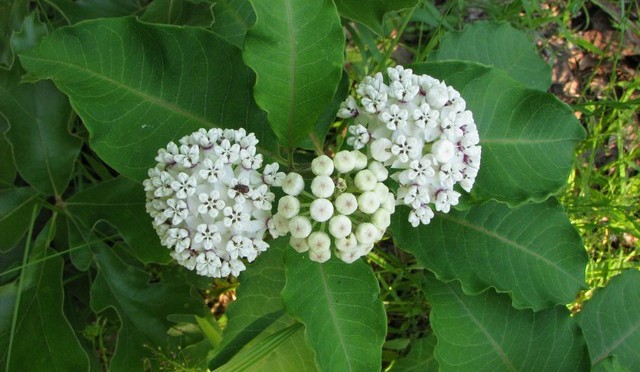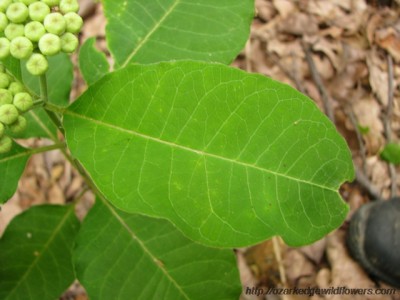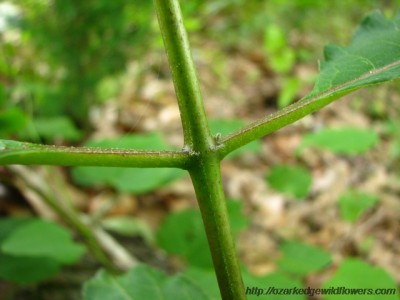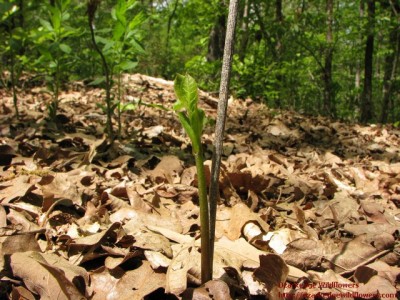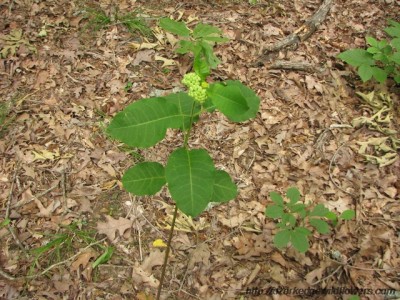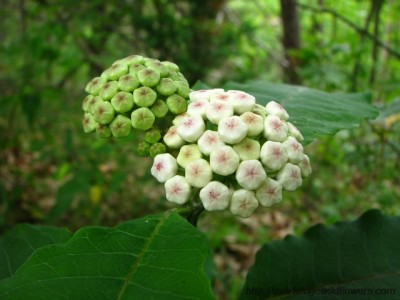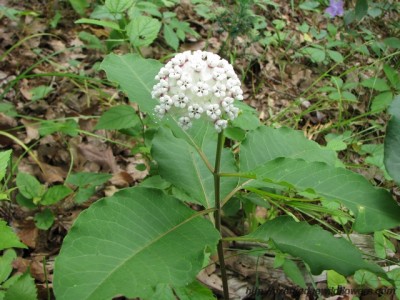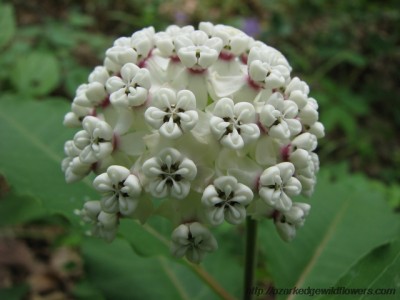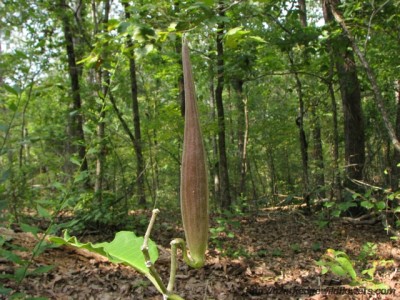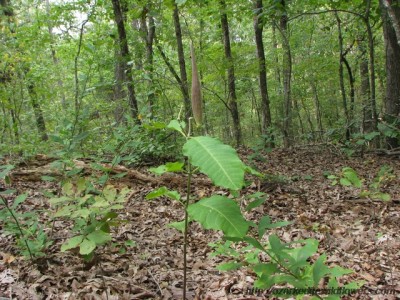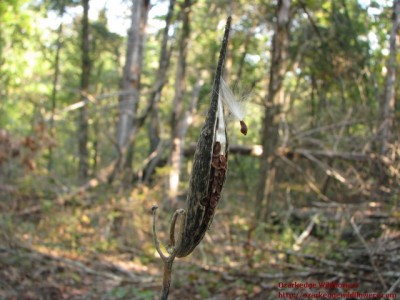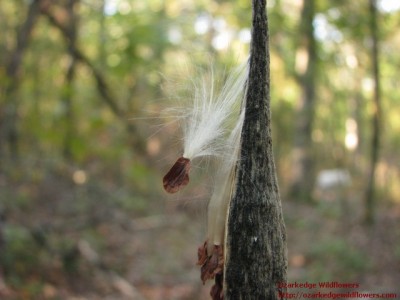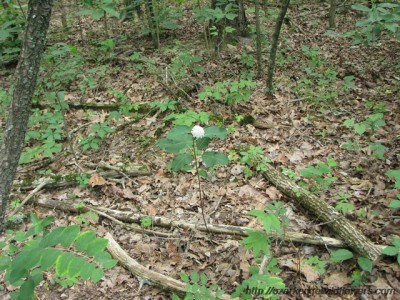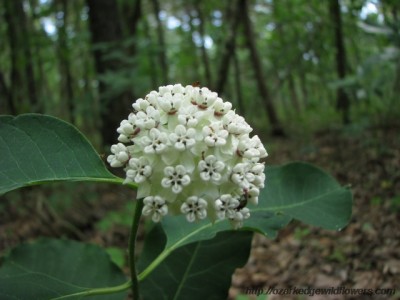Variegated milkweed is a lovely Arkansas native with bright white flowers, each ringed with a reddish-purple band. This pretty flower is not very common on Ozarkedge, but I see it ever spring and summer along my horse trail in the dry woods.
Latin Name/Common Name- Asclepias variegata is the latin name. The term Asclepias refers to the Greek god of healing because of the many folk medicinal uses of milkweeds. There are many common names including variegated milkweed, white milkweed and red ring milkweed.
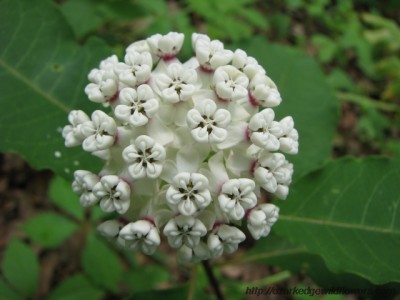
Bloom Color- The large flower head is a bright, white umbel containing many small flowers, each with 5 petals having reddish-purple bands at their base. The flower buds are green when young, gradually becoming lighter until they open, displaying snow-white clusters.
Variegated Milkweed not quite in full bloom May 24th
Description- In my experience, Variegated milkweed tends to be a loner in its environment, although I have occasionally seen it growing in groups. It is a tall plant, reaching up to 3 feet in height The purplish-green stem is smooth and will exude a milky sap if broken. The leaves add to the showy nature of this plant. They are quite large, being up to 5 inches in length and 3 inches in width and arise opposite one another. Their edges are often wavy. Each leaf has a center vein that may be yellow to reddish in color.
The center vein on this leaf is yellow
Opposite leaves on the smooth stem
This perennial sends up a fresh green stem and leaves in April each year. The stem from the previous year is often still present and the new growth appears adjacent to the brittle and spent stem from last year.
New growth adjacent to last season’s stem appears in April
Variegated Milkweed plant with greenish buds in late May
Early blooms not quite open in late May
In full bloom, the Variegated Milkweed is very showy
Bloom Time- Variegated milkweed blooms from May to July. On Ozarkedge, the buds are usually not in full bloom until nearly June. The large seedpod is seen in late August to September.
Full bloom May 31st 2009
The large seed pod September 4th
Close up of a single seed with it’s feathery parachute in mid October
Habitat- On Ozarkedge, this plant is found in the drier woods, rather than the mesic woods. It occurs singly, rather than in groups. It is not a common plant, found only occasionally in the southeastern part of the Ozarks. The seeds are dispersed by wind. The large seedpod pops open when it is disturbed by deer, or in my case, a large dog.
A single Variegated Milkweed surround by Oak trees in a dry woodland
What’s Growing Nearby? This plant is a little bit lonely. As I mentioned, it is usually found growing as a single plant rather than in a group. Oak trees, dogwood and sarvis trees are neighbors.
Endangered List- Variegated milkweed is endangered in Connecticut, New York and Pennsylvania. Click here to see the latest status on the USDA Plants Database. This link should take you to the General page showing a map with US distribution. Click on the Legal tab on to see the latest updates on its Threatened and Endangered status.
Natureserve lists Variegated milkweed as Vulnerable in Ohio and Indiana, Critically Imperiled in New York, Pennsylvania and New Jersey and Imperiled in Delaware. Sadly it’s shown as Possibly Extirpated in Connecticut.
Snow white bloom with purple bands
Interesting Tidbits- Variegated milkweed is listed as a moderate preference white-tailed deer food. Bobwhite eat the seeds. Probably the most significant wildlife use of this plant is for the nectar that is attractive to many types of butterflies and insects.
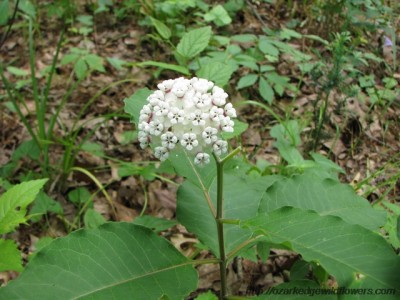
There were two buds on this plant, but the deer browsed one. You can see the remaining stem on the right.
